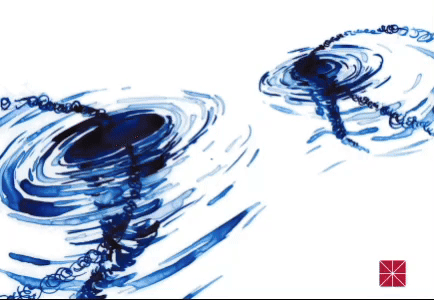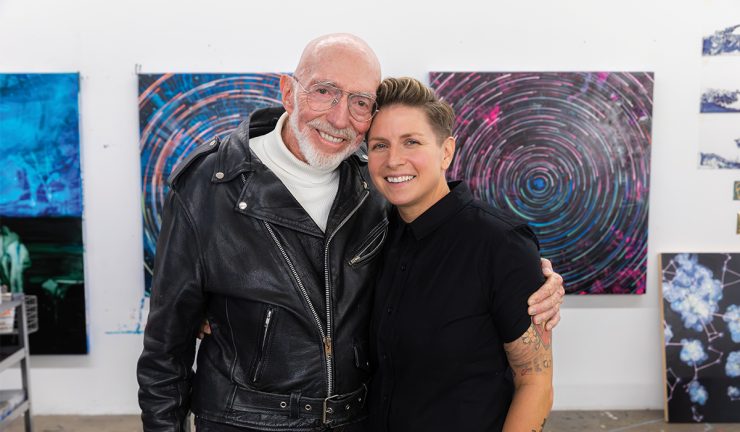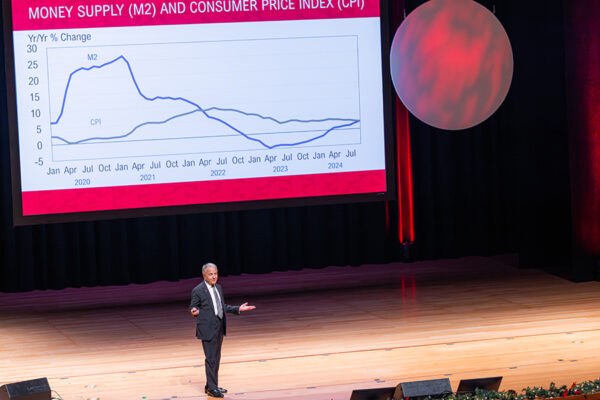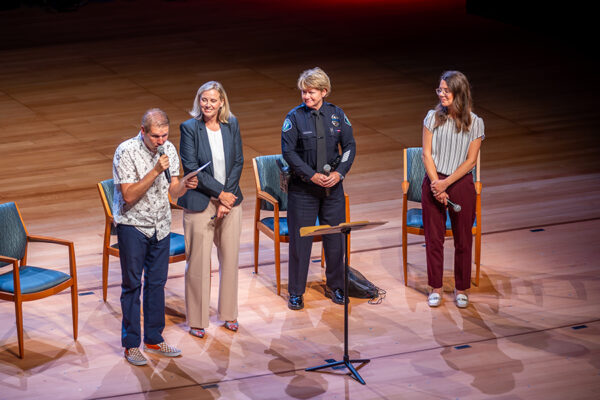Chapman University Associate Professor Lia Halloran and physicist Kip Thorne shared the story behind their unique collaboration during a keynote speech at the National Academies’ Space Science Week in Washington, D.C.
Their conversation explored how complex scientific concepts can be made accessible through creative interpretation, specifically highlighting their unique cross-disciplinary book, “The Warped Side of Our Universe: An Odyssey Through Black Holes, Wormholes, Time Travel, and Gravitational Waves.” An exhibition highlighting this work is on display at the National Academy of Sciences building through June 1.
Halloran, chair of Chapman’s Department of Art, recounted how Thorne’s book, “Black Holes and Time Warps,” inspired her work as a graduate student.
“It felt like an invitation to the universe,” Halloran said of Thorne’s work.

Years later, a chance encounter with Thorne led to their collaboration, blending his scientific prose with Halloran’s visual art.
“We started with prose and paintings, and it grew into a book,” Thorne said. “Seeing it laid out with my writing as verse next to Lia’s paintings, I realized we could convey the science through art and poetry.”
The project aimed to reach a broad audience including artists, poets and scientists. Halloran emphasized the importance of evoking curiosity in her work.
“If I can’t excite myself in my own studio, then I have no chance of doing that for the public,” Halloran said. “It’s all about creating that sense of wonder.”

Thorne praised Halloran’s ability to visualize abstract concepts such as vacuum fluctuations.
“When I described them, she asked, ‘What do they look like?’ and I said, ‘I don’t know—once you paint it, I’ll see it,’” Thorne said. “That freedom was key to our collaboration.”
The book includes deeply personal elements, with Halloran’s wife depicted as the book’s space traveler and Thorne’s poetry inspired by love poems written for his wife.
“This is a love letter to black holes and gravity,” Halloran said.

The day prior at the Kennedy Center, Halloran also discussed quantum fluctuations, drawing connections to conceptual art and the power of the unseen.
To view the National Academies’ video of the speech, visit https://vimeo.com/event/5008217.




